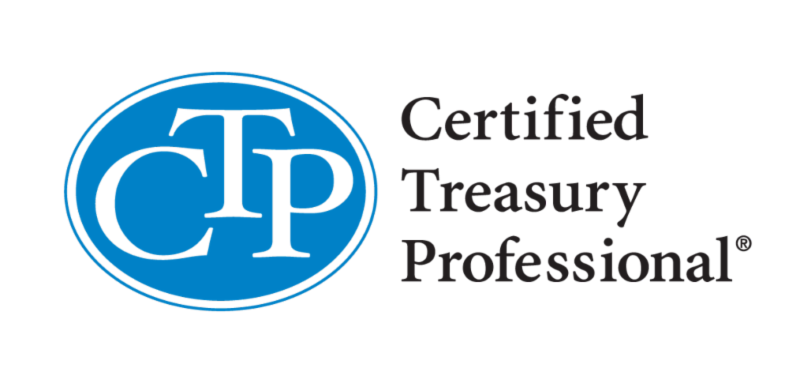
Episode 243
Becoming a Treasurer Series, Part 24:
Languages of Finance: FP&A
As we jump back into the Becoming a Treasurer series, we are launching a new sub-series where we will look at the “language of finance.” Communication matters, and understanding how different groups use terms is vital for effective communication. In the Language of Finance sub-series, we will look into different terms that should be understood in order to communicate effectively with the rest of your treasury team and with others.
In this podcast, Craig Jeffery and Jason Campbell talk through some of the important questions regarding financial planning and analysis. How does the language of FP&A differ from treasury? Listen in to find out.
Host:
Jason Campbell, Strategic Treasurer


Speaker:
Craig Jeffery, Strategic Treasurer


Subscribe to the Treasury Update Podcast on your favorite app!
Episode Transcription - Episode #243 - Becoming a Treasurer Series, Part 24: Languages of Finance: FP&A
Announcer 00:04
Welcome to the Treasury Update Podcast presented by Strategic Treasurer, your source for interesting treasury news, analysis, and insights in your car, at the gym, or wherever you decide to tune in.
Jason Campbell 00:18
Welcome to the Treasury Update Podcast. It’s been a long time since we added to the Becoming a Treasurer series. So really looking forward to kicking this this off and picking it up again. And in this series, we’re gonna talk about the languages of finance. It’s a really nice little title for that: Languages of Finance. Kind of like that. Particularly we’re gonna get into FP&A: financial planning and analysis. With me today is Craig Jeffery, managing partner at Strategic Treasurer. Craig, glad to have you on.
Craig Jeffery 00:45
It’s good to be on. There’s nothing like a series of podcasts. And there’s a series within a podcast and then a series within a series. So this is a Languages of Finance within the Becoming a Treasure series. It’s all part of the Treasury Update Podcast.
Jason Campbell 01:01
I love it. I think that’s the best way to explain it, how it all works out. A series behind the series behind the series. Is it a prequel? Is it a sequel. So let’s kick into really talking about this languages of finance here. And let’s talk about what is the purpose of, of the languages of finance sub series?
Craig Jeffery 01:20
It’s really about how communication matters. I mean, even though we are all within finance, there are quite a few different words that we use that have varied meanings. So this equivocation of terms is certainly a challenge. We can say the same word, it means something different to the other party. And particularly if we’re in finance, there’s an expectation that we’re using the same terms in the same ways. And that’s not the case. And so this is about how can we make our communication more effective?
Jason Campbell 01:49
And I think that’s, you know, really, when you think about communication is to ensure right talk about, you know, how’s it interpreted, you know, he’s having the same level of speaking, and I’m sure there’s again, just like there’s different dialects, but y’all gotta make sure that you’re on the same page. Right. So how is the languages of FP&A? Different from Treasury?
Craig Jeffery 02:07
Well, treasury’s, right and FP…, no. No, I mean, some of the language differences between FP&A and treasury emerge from their, their basic orientation, FP&A, financial planning and analysis, is a discipline that is heavily weighted towards income. It’s focused on detecting and determining what the income will be over time. So it’s a projection of income primarily. Or they’ll do some projections on the balance sheet side. But their orientation is income. Treasury’s orientation primarily, is on the balance sheet. It’s about liquidity, cash, working capital. So there’s two different orientations for those disciplines. Both have a forward look. But there’s a slight difference in that one’s looking for income, and one’s looking for balances of certain assets, particularly liquid assets. So that’s, that’s probably the biggest source of those differences. The other is, you know, we look at forecasting that flows out of that foundation, right? When someone’s doing a forecast for FP&A. They’re looking at larger buckets of time, larger groups of time. And they’re they’re projecting income, it’s an income forecast. Whereas oftentimes, any type of projection or, you know, mapping into the future, what Treasury does, it’s looking at what will what does their balance sheet look like? What should it look like in the future to support the business? So balance sheet versus income statement is a real, real common difference between what people use, they use the same words like forecast, or model, those things are similar, but there’s a there’s a different focus, as you go forward, Treasury cares much more about what the balance sheet will look like. And FP&A cares a lot more about the income statement.
Jason Campbell 03:51
But it also seems like you got to kind of have both right, almost seems like you know, both are going to be very important from a financial literature, right, and ensuring that as they have, you know, conversations and work together within the same department, necessarily, because it’s the financial pieces, right? Those two components are obviously vital. You want to know about the balance sheet and you have your expertise and to one area to someone has expertise in another area.
Craig Jeffery 04:15
That’s a good way of looking at both are different disciplines. And while there’s some similarities, those, those differences are vital. When you look at FP&A. Why are they looking at the income as things go forward with their with their plans, they’re trying to make sure that the organization can throw off and generate enough income to satisfy the investors or to reroute the spend into areas that are going to generate appropriate returns. So it’s a very effective way to prioritize capital spend and focus of an organization vital vital aspect of the finance group. Treasury has to make sure that there’s enough liquidity in the short term in the long term. So whether it’s short term liquidity planning or balance sheet planning that will again feature, you have to have that liquidity. You can’t, you can’t just say I’m going to do one and not the other. It doesn’t it can’t work without doing both of those. And so both, like you said, are, are very much needed. There’s a different purpose for them. There’s there’s certainly some overlap. But that’s, that’s a, that’s a good point you brought up.
Jason Campbell 05:17
So now looking at it is just like any other languages, right. And sometimes languages, if you have a misinterpretation of something, it can lead to something, you know, unfavorable. So let’s kind of talk about these two aspects that we talked about the FP&A, and Treasury. So what are the problems with misunderstanding each other,
Craig Jeffery 05:35
some of the misunderstandings of each other issues within finance are more on the management side of the overall organization, and not necessarily those in FP&A. And treasury. In this particular case, we’re looking at the language differences between FP&A and Treasury. We’ve talked about equivocation, the same word, meaning different things. And that can cause problems. One of the biggest areas that I see problems is when people talk about a forecast. It’s like there’s a lot of different meanings of forecasts, there’s the very short term liquidity forecast that Treasury does, it’s that might be looking out two weeks or four weeks, they’re short term forecast might be six months to a year. And then the overall liquidity planning the Treasury does maybe looking at a year and more. And so those are the those are all can be defined by the term forecast, though there’s different aspects even over that time domain by Treasury, when you look at FP&A, they’re they’re looking at to the future, they may go three to five years into the future. They tend to look at things in month buckets. And so the idea that we talk about forecast and what what what’s expected cash flow or income across the board, the challenge can be that management’s expecting these things should match up exactly. Right. A forecast is a forecast is a forecast is the is the thinking but it’s like no, that’s not accurate. We do that with many words all the time. From a humorous standpoint, and in our personal lives, or even at work we we have these assumptions that we’re we all mean the same thing. And so there’s there’s an issue, sometimes management will say, hey, we had a forecast from FP&A, or from a planning group that says our cash should have ended up here. And Treasury comes back and says, This is what we had at the bank at the time. Why is it so far off? reconcile the difference? And that’s, you know, some of that’s like telling a bunch of kids, you say, lineup alphabetically by height. And then they kind of wander around, say, Well, how do I do that? Because you’ve given me two directives that are at odds one to another and ensure in theory, you can say, Oh, well, we can always resolve our FP&A forecast down to what the cash would be that we need to make adjustments over time, for availability for liquidity and timing. But one is, one is a rough cut, you know, a month at a time is is good and helpful or quarter to time might be good and helpful for FP&A. Treasuries, when you’re getting closer Treasury is looking much more refined at that level. And so this reconciliation process is largely a big waste of time. And you’re coming up with some things to explain it away. And then finally, senior management will get bored, and say, Okay, that’s, that’s a little confusing. But they don’t understand they’re asking roughly a, not an impossible question, but a fairly useless question. If you’re looking for what cash you’re gonna have available at the end of the year, you need to be asking that from Treasury. And if there’s a variance, it’s a variance off of how they’re forecasting and planning. If you’re looking for a variance about your projected income, you need to ask FP&A. And to the extent that there’s massive variances of cash that’s expected to be generated from FP&A, Treasury, there may be some needs to find out what’s going on. And it may be everything from a very different CAPEX expenditure, that that’s delayed and so the cash hasn’t gone out. And while no expenses have been incurred, or accrued, for that, on the FP&A, side of the income statement side, the bigger challenge was, the bigger change was the cash didn’t flow out the 25 million or 200 million or whatever it was wasn’t expended, so they have more cash. Same thing, if something is sped up and release sooner, in cause a huge shift on the Treasury side for cash, minimal impact on the FP&A side, which is what’s the income purchases, amortization, depreciation, all very different flow of funds, then what happens on the income side?
Jason Campbell 09:40
So it’s interesting how you how, you know, they coexist in the same world and the same universe, right, but the two totally different functions and an aspect but they again, both have to happen and be aligned in order for you to have a successful finance world but in a sense, you do right so when does FP&A and trade Do you need to work together? No, you were you kind of went down the road a little bit talking a little bit more a cache, you know, kind of walk us down a little bit more on ways that they collaborate.
Craig Jeffery 10:08
Yes. I mean, that’s a good point. Yeah. So you and your, to your universe example. I mean, so the universe might be all of the different galaxies and within that solar system, I mean, it should be that FP&A, a treasury control or some of these finance areas, they should be in the same solar system, maybe like different planets, other ones, we get to other solar systems, there’s much greater divergence. And sometimes, sometimes that’s better for communication, because you know, you’re not talking the same language, like I don’t understand what you’re doing here in this medical facility. And so they explain it, and they’re like, Okay, this is a different world. And here’s a small point of intersection between billing and you know, the billing might be the point of intersection. But in finance, they tend to be fairly close. But to your question of, where do they need to work together? How do they need to work together? I think there’s some massive benefits in the in the area of forecasting, when there is planning FP&A is looking at, where’s our income? Where’s that what’s happening, where where are expenses being generated out of, there’s a lot of gold there, for Treasury to take advantage of that. There should be some feedback mechanism into treasury, maybe even using the data. But there’s some information that Treasury can find very useful, there might be some surprises that they didn’t hear from another because it’s not in A, it’s not in a financial statements not in the general ledger, it’s not in the it’s not in the ERP. It’s in somebody’s plan, that’s, that doesn’t exist, you can’t pull it from a system, someone else is putting in there and FP&A may have good information about the expected flow of this investment, that’s going to generate income. And so when you work together, you can get much better information by talking to the other group. Conversely, Treasury understands the the actual cash flows for all the legacy business areas, they may have good experience about, you know, tax payments, other other issues that are not seen as material to the forecasting of income statements, because the cash flows difference and for them to have some visibility to how Treasury’s plotting those can give them a sense of, oh, here’s what we’re expecting from income. But, you know, we smooth everything over for expenses or disbursements. And that’s not the case. You know, in reality, in the real world, it is so so for those who may not be focused on finance, you know, the idea of, if you have your a mortgage, you have an escrow account, like insurance payment, and you’ve got, I don’t know what the big ones are here. But let’s say, insurance is once a year in taxes, maybe another payment once a year, if those are being escrowed, every month, that comes out nice and evenly. And that’s like, Oh, that’s perfect. It’s great for cash flow planning, maybe not the best use of cash, because it’s, you’re paying it early. And that’s what it looks like to, you know, the FP&A worlds like things tend to be smooth, because those are treated as expenses on a monthly basis. From a cash flow perspective, when those are dispersed, they’re dispersed all at once. And so while there’s a smoothing, because you’re paying the bank, or whoever holds your mortgage, you’re paying them every month, the disbursements are very uneven. So I think both of those can really help and they help from a capital planning standpoint, Treasury needs to know what those those elements are, make sure not missing anything. And that’s a that’s a, that’s a big benefit on the Treasury side. So forecasting, capital planning, those are those are good areas. So the other fact is that if you were talking to someone else who’s forecasting, and they have changes, just that dialogue, even though it’s done for a different purpose, that dialogue about here’s changes, here’s expectations, that matters, because that can inform the others thinking, especially if they’re saying how our profit was gonna go down. Why is it going to go down? Well, X, Y, and Z are happening. And Treasury can factor that in. Same thing with Treasury, they can say these things are, are slowing up, they’re changing, they’re altering, is there a feedback loop the other way, so this, this discussion, with two disciplines that look at the future, there’s a way to find some way to bridge some of these gaps. So it’s well worth the time to be talking to one another, at least every quarter. And oftentimes, more frequently will be useful too.
Jason Campbell 14:27
So I think some hidden nuggets here is develop some friendships, right? Get to know people within the space that can help you understand your role better, but also too as well from a financial perspective, accompany health check, things of that nature. Having that camaraderie of knowing the players and and getting an Intel right, I mean, that’s a big thing. You’re going to share things that are both going to be beneficial to both parties. So really be Be nice, be kind, get some friends and get some friends and have some have some good water cooler talk there. So well, Craig. Well, thank you so much for joining today on this episode of becoming a treasure, I think we definitely picked up some really good tidbits out of this episode here. So I really do appreciate your time. And for our listeners, thank you so much. And we hope you join for our next episode as we get into talking a little bit more about controllers. I know we touched we we talked about I think we mentioned controller once in this episode, so looking forward to kind of dive in into that language of finance as well.
Announcer 15:30
You’ve reached the end of another episode of the Treasury Update Podcast. Be sure to follow Strategic Treasurer on LinkedIn. Just search for Strategic Treasurer. This podcast is provided for informational purposes only, and statements made by Strategic Treasurer LLC on this podcast are not intended as legal, business, consulting, or tax advice. For more information, visit and bookmark StrategicTreasurer.com.
Related Resources
Earn your CTP credits on-demand
Check out our on-demand options for earning your continuing education credits for CTP. We offer 0.5 – 1.2 CTP credits for select webinars and podcast episodes. Listen and then take the coordinating quiz and pass it to receive your credits straight to your inbox!
Becoming a Treasurer – A Treasury Update Podcast Series
This series within The Treasury Update Podcast explores questions around being a successful treasurer. Topics discussed include preparation, what needs to be measured, effective communication, development of a team, and acquirement of resources needed.








